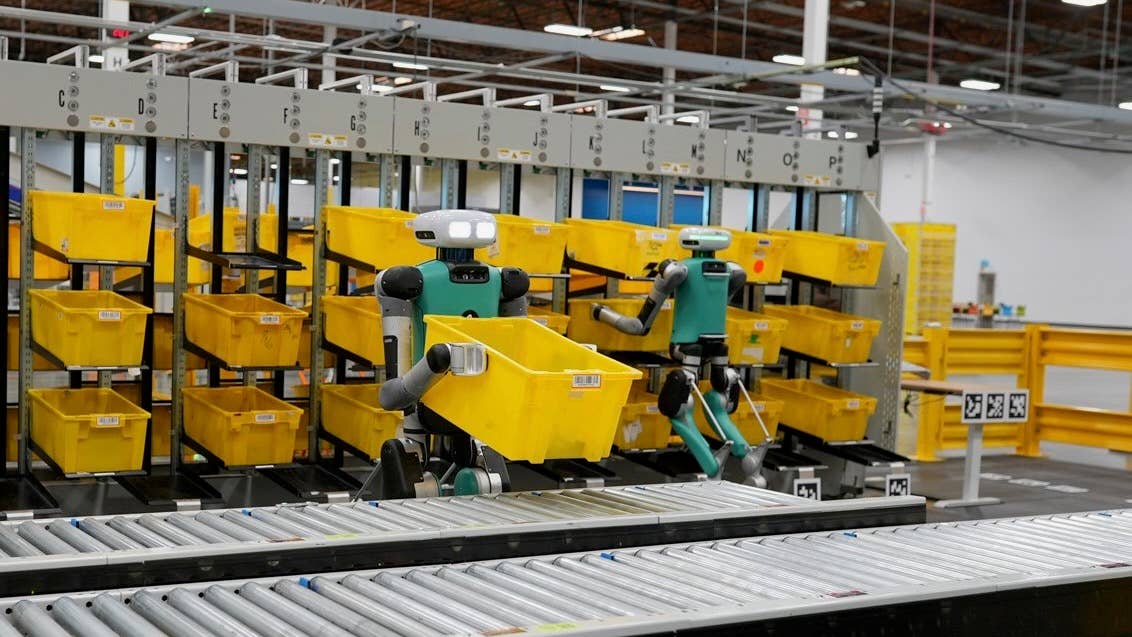Amazon’s Billion-Dollar Investment Arm Targets Generative AI in Robotics

Share
Last year, Amazon announced the next step for its growing robotic workforce. A new system, dubbed Sequioa, linked robots from across a warehouse into a single automated team that the company said significantly increased the efficiency of its operations.
The tech giant is now looking to fund a newer, smarter generation of robots. In an interview with The Financial Times, Amazon's Franziska Bossart said the company's billion-dollar industrial innovation fund will accelerate investments in startups combining AI and robotics.
"Generative AI holds a lot of promise for robotics and automation," said Bossart, who heads up the fund. "[It's an area] we are going to focus on this year."
Generative Anything
Generative AI is, of course, still hot.
Google, Microsoft, Meta and others are battling for an early lead in the tech popularized by OpenAI's ChatGPT. The algorithms are well-known for generating text, images, and video. But researchers believe their potential is greater. Anything with sufficiently large amounts of data is fair game. This could be the molecular structures of proteins—as we've seen—or the mechanical positioning data that helps robots complete real-world tasks.
Recent experiments combining generative AI and robots have already begun to yield some interesting results.
At its simplest, this has involved giving an existing robot a chatbot interface. Thanks to an internet's worth of training data, the robot is now able to recognize nearby objects and understand nuanced commands. In a Boston Dynamics demo last year, one of the company's robots became a tour guide thanks to ChatGPT. The bot could assume different personalities and make surprising connections it wasn't explicitly coded for, like suggesting they consult the IT desk for a question it couldn't answer.
Other potential applications in robotics include the generation of complex and varied simulations to train robots how to move in the physical world. Similarly, generative algorithms might also make their way into the systems controlling a robot's movement. Early examples include Dobb-E, a robot that learns tasks from iPhone video data.
Of course, AI for images, text, and video has a clear advantage: Humanity has been stocking the internet with examples for years. Data for robots? Not so much. But that may not be the case much longer. Google and UC Berkeley's RT-X project is assembling data from 32 robotics labs to build a GPT-4-like foundation model for robotics.
All this has begun to stir up interest from researchers and investors. And it seems Amazon, with its long track record developing and employing robots, is no exception.
Be Part of the Future
Sign up to receive top stories about groundbreaking technologies and visionary thinkers from SingularityHub.


Amazon End Effector
A billion dollars ain't what it used to be. As of today, there are six technology companies valued over a trillion dollars. AI startups are attracting investments in the billions. Indeed, Amazon has separately committed up to $4 billion to OpenAI competitor Anthropic.
Still, that Amazon plans to direct significant funds into AI and robotics startups is notable. For young companies, tens of millions of dollars can be make-or-break. This is especially true given slowing venture capital investments across tech the last year.
Amazon's industrial innovation fund, announced in 2022, has already invested in robotics startups, including Agility Robotics. The company, whose Digit robots are being tested in Amazon warehouses, opened a factory to mass-produce the robots last year. It also released a video showing how it might sprinkle in some generative AI magic.
Though there's no official number on how much cash the Amazon fund still has at the ready, a report in The Wall Street Journal last year suggests there's a good bit of room to run.
Bossart didn't mention companies of interest or what kinds of tasks robots using generative AI might accomplish for Amazon. She said the fund would go after startups that help Amazon's broad goals of increasing efficiency, safety, and delivery speed. Investments will also include a focus on "last mile" deliveries. (Agility's Digit robot made early headlines for its potential to deliver packages to doorsteps.)
Amazon isn't alone in its efforts to combine AI and robotics. Google, OpenAI, and others are likewise investing in the area. But of the big tech companies Amazon has the most obvious practical need for robotics in its operations, which may shape its investments and even provide a ready market for new products in its warehouses or delivery vans.
Even as AI chatbots and image and video generating algorithms continue to drive the flashiest headlines—it's worth keeping an eye on AI in robotics too.
Image Credit: Agility
Jason is editorial director at SingularityHub. He researched and wrote about finance and economics before moving on to science and technology. He's curious about pretty much everything, but especially loves learning about and sharing big ideas and advances in artificial intelligence, computing, robotics, biotech, neuroscience, and space.
Related Articles

Study: AI Chatbots Choose Friends Just Like Humans Do

AI Companies Are Betting Billions on AI Scaling Laws. Will Their Wager Pay Off?

Are Animals and AI Conscious? Scientists Devise New Theories for How to Test This
What we’re reading
